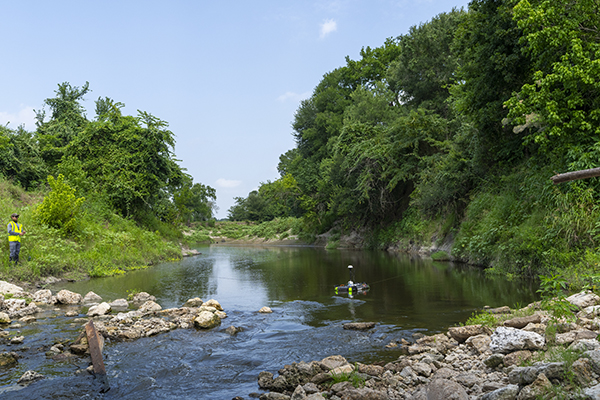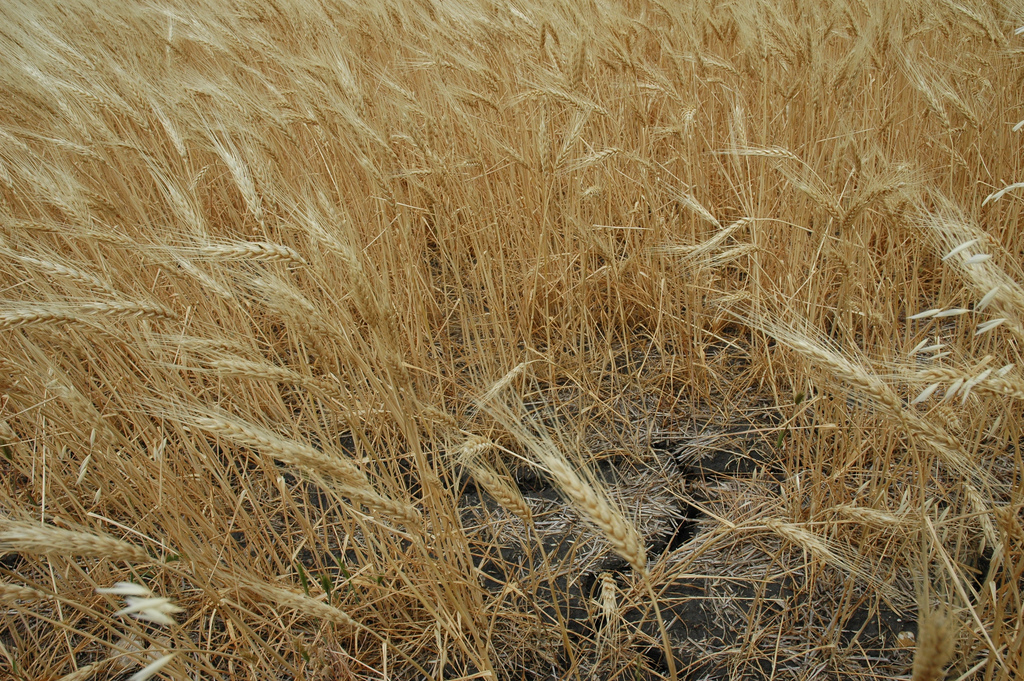For the past four decades, the Agricultural and Food Policy Center, AFPC, at Texas A&M University, part of the Texas A&M College of Agriculture and Life Sciences Department of Agricultural Economics, has quietly but effectively worked behind the scenes to inform and advise legislative decision-makers on a bill that ultimately impacts every American.
The AFPC was created in 1983 as a joint activity between Texas A&M AgriLife Research, Texas A&M AgriLife Extension Service and Texas A&M University to conduct analyses of the impacts of government policy proposals and/or implementation procedures on farmers, agribusinesses, taxpayers and consumers. One of the center’s most important endeavors is helping provide needed information and insights to assist and facilitate farm bill development.
About the farm bill
The farm bill supports U.S. farmers, ranchers, forest stewards and consumers through a variety of safety net, farm loan, conservation and disaster assistance programs. It also authorizes and sets the guidelines for the Supplemental Nourishment Assistance Program, SNAP.

“The farm bill provides crucial assistance to our agricultural communities, helping them with the challenges of weather, fluctuating markets and ever-changing regulations,” said Joe Outlaw, Ph.D., co-director of the AFPC and AgriLife Extension economist. “It also plays a vital role in promoting rural development and addressing conservation and nutrition efforts that benefit millions of Americans.”
Outlaw said the framework for agricultural and food policy is set through the legislative process that happens about every five years.
“The current farm law, the Agriculture Improvement Act of 2018, also called the 2018 Farm Bill, was the most recent farm bill,” he said. “Now, Congress is in the process of debating and working toward passing a new one.”
Toward drafting that new farm bill, the House Committee on Agriculture recently voted to advance its 900-plus page Farm, Food and National Security Act of 2024 version of the $1.5 trillion bill out of committee.
Outlaw and AFPC co-director Bart Fischer, Ph.D., offered their insights into the center’s role in farm bill development, along with identifying the key provisions of the current version of the bill and explaining how the bill will likely impact farmers, ranchers, agricultural commodity groups and others.
How does the AFPC work with the House and Senate Agriculture Committees to develop a farm bill?
We spend a lot of time in Washington, D.C., working behind the scenes with Congressional staff and legislators.
For the past 41 years, our goal has been to provide objective, research-based information to the committee and to help educate decision-makers on the challenges and needs of a variety of agricultural producers. We supply salient information to help these decision-makers evaluate farm policy options, and we develop quantitative analyses of agricultural policy proposals without taking a position as to whether the proposal is good or bad.



We interact with members of Congress and key agricultural committee staff to provide feedback on the likely consequences of agricultural policy changes. Our activities focus on such things as assessing the impacts of farm programs, risk management tools, renewable energy and climate change legislation on U.S. agricultural operations.
The data we provide helps them more fully understand the potential impacts of agricultural policy proposals so they can deliver a farm bill that mitigates the risks to farmers and ranchers and develops legislation that supports a robust rural economy and invests in U.S. agriculture.
After all this time, it is amazing how many times we are asked about a “new” option being considered that had been used in previous farm bills. Having been involved in the process for a long time means we have analyzed a broad range of proposals … some that were adopted and even more that were shown not to work as desired and were scrapped.
How does the AFPC glean its information for agricultural policy research?
The center develops and maintains data to simulate 92 representative crop, dairy and livestock operations in major production areas in 30 states. The chief purpose of this analysis is to project the economic viability of those farms into the future by region and commodity. These operations are used in policy research analysis, with the data necessary to simulate the economic activity of these operations cultivated through ongoing cooperation with panels of agricultural producers in selected states. The representative farms are updated every two years.
We partner with the Food and Agricultural Policy Research Institute at the University of Missouri, which provides commodity price and inflation rate projections that are used in our representative farms to project future financial well-being. “What if” analyses of specific policy changes are then evaluated relative to the current or baseline situation to determine whether the farms would be better or worse off financially under a proposed policy.
What are some key provisions of the current proposed farm bill?
The bill would bolster commodity programs for producers by some $45 billion over the next decade by increasing reference prices in the Price Loss Coverage program and coverage levels under the Agricultural Risk Coverage program. The current version of the bill also includes an opportunity for farmers to update and add base acres to their operations by up to as much as 30 million acres. Farmers who receive 75% or more of their income from farming or ranching would see their payment limits increased from $125,000 to $155,000.
For crop insurance, it would expand premium subsidy support for beginning farmers and ranchers. It would also increase premium support for the Supplemental Coverage Option, SCO, to 80% while increasing the coverage level to 90%.



What is causing the delay with the farm bill, and how are these issues being addressed?
The bipartisan agreement typically needed to advance a farm bill has been complicated by Congressional disagreements on sources of funds needed for policy changes.
The three major issues throughout negotiations have been related to:
— Funding and eligibility for SNAP.
— Reallocation of climate-related conservation program funds from the Inflation Reduction Act to the farm bill’s conservation title.
— Restricting the agriculture secretary’s discretionary use of Commodity Credit Corporation funds.
Passing a workable farm bill requires bipartisan support, so there is a lot of behind-the-scenes push and pull. This is not uncommon, and several previous farm bills have gone beyond normal deadlines to be completed.
How will the farm bill impact Texans?
Texas producers will benefit from the new farm bill’s key provisions, especially those relating to strengthening the farm and ranch safety net.
Texas farmers also have some unique challenges they hope to address through the farm bill, such as including provisions to help address the overpopulation of feral hogs and eradication of cattle fever ticks.
Another desired provision would indemnify ranchers for the loss of unborn livestock due to natural disasters, such as the wildfires that swept across the Texas Panhandle earlier this year.
How are agricultural commodity groups reacting to the current proposed farm bill?
Overall, commodity groups and the ag industry have been very positive toward the current House iteration of the farm bill. Many national agricultural commodity groups have issued statements giving their perspectives on the farm bill, with some voicing a few concerns over how it may impact their particular industry.
A major issue for all commodity groups is addressing inadequacies in the farm safety net. Over the past few years, the safety net has lagged in its ability to protect American farmers and ranchers, primarily due to significant increases in the costs of agricultural inputs and equipment.
Most commodity groups also appreciate that the bill accommodates more investment in the future of agriculture and recognizes its vital role in feeding and clothing a growing population. The current version of the farm bill also provides new and better tools and resources for farmers, ranchers and rural community residents.
What’s next, and how will the AFPC be involved?
Though passage by the committee means the current version of the farm bill is ready to be voted on by the entire House, there is still uncertainty as to whether the bill will be brought to the floor.
The U.S. Senate Committee on Agriculture, Nutrition and Forestry will soon unveil its draft text, which will then set in motion the process of negotiating the final passage of the farm bill.
The current farm bill has been extended to September, so we hope something can be finalized by then. With that said, it won’t be a surprise if passage waits until after the election or even slips into next year.
In the meantime, the AFPC will remain involved throughout the entire process to make suggestions and serve as a sounding board for proposed changes. The farm bill is a vital piece of legislation that ultimately affects everyone in the U.S. and beyond, and we will be involved until the final bill is passed.


